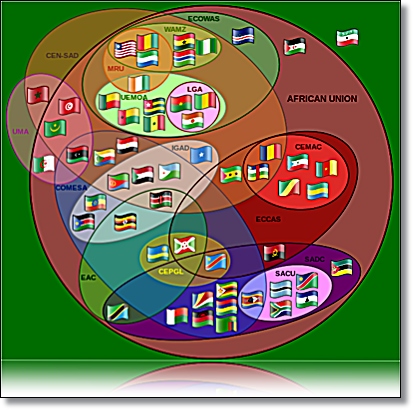RECs Key to Africa Unity
 |
The matter is at the centre of the quest for impactful and sustainable results from regional integration efforts. Evidently, the capacity interventions deployed over the years have been largely fragmented and reactive, rather than well planned and strategized initiatives to respond to the development needs and challenges.
Whereas there have been a number of initiatives to enhance capacities of RECs to deliver on their mandate, to contribute to the African continental agenda, and harness Africa’s potential, it is worth noting that not much attention has been paid to the coherence and linkage requirements. This approach has not created an enabling environment, where the different institutions, especially regional communities can deliver effectively and efficiently, in a coordinated manner with synergies.
Therefore, the capacity of the entire AU institutional architecture requires attention, as part of the RECs capacity and institution building process particularly as it relates to effective linkage with other AU institutions in avoiding, the long standing and unattended problem of overlaps and duplication by institutions which are supposed to be working in coherence, linking and reinforcing transformation efforts.
A clear definition on the role and space of cooperating partners in strengthening institutional capacities is of critical importance. This will allow for entrenched ownership of Africa’s development agenda by Africans.
The advent of Agenda 2063 is an opportune moment to attend to systemic capacity needs of AU institutions as we gear for its implementation which should connect RECs Strategic Plans, Post-2015, NEPAD and other priorities.
Let us not lose sight of the fact that the overall capacity of Africa and the African Union’s institutions, including RECs will ultimately determine the quality of regional integration that will be attainable. That the effective delivery of regional integration in Africa implies a strong, robust, learning and transformational network of both national and regional institutions and in particular the RECs, as the building blocs for Africa’s transformation.
This fundamentally implies the dire need for effective RECs, as coordinating and facilitating institutions, whose own capacities are strong enough to drive regional integration, while also fostering the institutional reforms and development. The proposed delivery model should have the RECs as the centerpiece upon which intervenes on regional integration in Africa. In order for Agenda 2063 to effectively obtain results, it is essential that we realize and put in place effect system-level capacities that strengthen RECs as capable institutions which ought to compliment the African Union to deliver on Agenda 2063.
A new approach on an integrated model of capacity building linking the AUC, RECs and Member States is important to strengthen the capacities of all key stakeholders and should foresee putting in place effective and coherent coordination structures, mechanisms and systems with a view to create synergies while avoiding duplication and wastage of resources.
The initiative should aim at forging functional linkages between RECs and other AU Organs and Institutions. It should seek to promote coordinated and sustainable impact by fostering transformative, purposive, people-centered and private-sector driven interventions. Through this program, we should envisage the effective realization of RECs Medium to Long term Strategic Plans, and the Post 2015 Development Agenda and AU transformation agenda.
In view of these considerations, our main proposal as RECs is for us to move quickly with already started process of capacity needs assessment of the AUC and RECs to allow us to put in place an effective capacity building programme which will enable us to implement the Agenda 2063. The Implementation Plan further will serves as basis to effectively mobilize partnerships, and coordinated strategic resource mobilisation initiatives towards coherent and common goals for Capacity Development in Africa.
Clearly, an effective continental programme requires appropriate capacity to drive its programme on a sustainable trajectory if our intended objectives are to be met. It is also critical that we put in place a homogenous capacity across the RECs, the AUC, the national levels and related stakeholders. I am inspired that through the Agenda 2063, we seek to ensure an asymmetrical capacity building programme, based on which we can collectively drive our common integration and development agenda. Excellencies, please enable us to keep the momentum.
SADC’s approach to capacity building is based on the Revised Regional Indicative Strategic Development Plan (RISDP) 2015-2020, and SADC Industrialisation Strategy, which were approved by the SADC Summit taking into account the Agenda 2063 of the African Union.
By HE. Stergomena Lawrence Tax
Executive Secretary, SADC.
